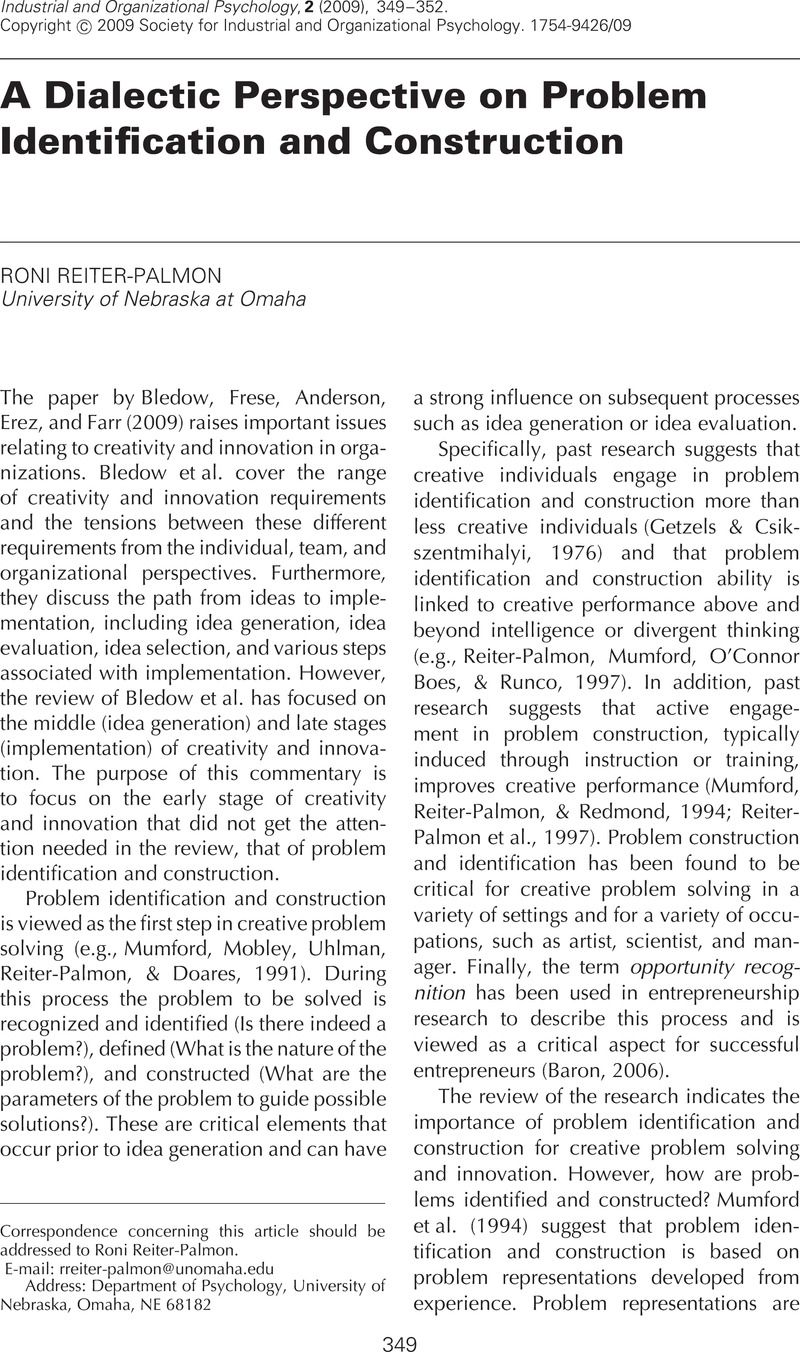Crossref Citations
This article has been cited by the following publications. This list is generated based on data provided by Crossref.
Bledow, Ronald
Frese, Michael
Anderson, Neil
Erez, Miriam
and
Farr, James
2009.
Extending and Refining the Dialectic Perspective on Innovation: There Is Nothing as Practical as a Good Theory; Nothing as Theoretical as a Good Practice.
Industrial and Organizational Psychology,
Vol. 2,
Issue. 3,
p.
363.
Dane, Erik
2010.
Reconsidering the Trade-off Between Expertise and Flexibility: a Cognitive Entrenchment Perspective.
Academy of Management Review,
Vol. 35,
Issue. 4,
p.
579.
Heinen, Rachel
Leone, Salvatore A.
Fairchild, Joshua
Cushenbery, Lily
and
Hunter, Samuel T.
2015.
Handbook of Research on Digital Media and Creative Technologies.
p.
374.
Boughzala, Imed
and
de Vreede, Gert-Jan
2015.
Evaluating Team Collaboration Quality: The Development and Field Application of a Collaboration Maturity Model.
Journal of Management Information Systems,
Vol. 32,
Issue. 3,
p.
129.
Fitroh
Siregar, Sahbani
and
Rustamaji, Eri
2017.
Determining evaluated domain process through problem identification using COBIT 5 framework.
p.
1.
Yulandi
Suryanto, Yohan
and
Ramli, Kalamullah
2018.
A COBIT-Based Critical Asset Evaluation of Electronic Certificate Management in Central, Urban, and Rural Government Agencies: Study and Analysis.
p.
98.
Mumford, Michael D.
Martin, Robert
Elliott, Samantha
and
McIntosh, Tristan
2020.
Creative Failure: Why Can't People Solve Creative Problems.
The Journal of Creative Behavior,
Vol. 54,
Issue. 2,
p.
378.
Caron-Fasan, Marie-Laurence
Chanal, Valérie
Merminod, Valéry
and
Monfort, Emmanuel
2021.
Individual Preferences in Creative Problem Construction.
Journal of Innovation Economics & Management,
Vol. n° 36,
Issue. 3,
p.
11.
Montag‐Smit, Tamara
and
Keith, Melissa G.
2023.
Changes in Positive and Negative Affect during Creative Process Engagement.
The Journal of Creative Behavior,
Vol. 57,
Issue. 4,
p.
690.


